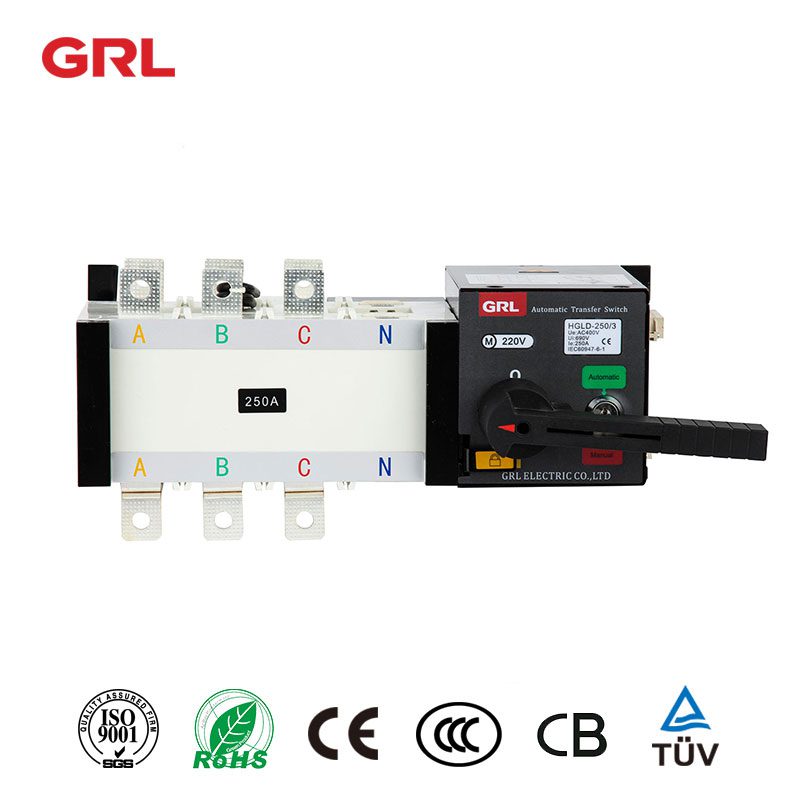Automatic Transfer Switch for Uninterrupted Power Supply

# Automatic Transfer Switch for Uninterrupted Power Supply
## What is an Automatic Transfer Switch?
An Automatic Transfer Switch (ATS) is a critical component in backup power systems that ensures seamless transition between primary and secondary power sources. These devices automatically detect power failures and switch the electrical load to a standby generator or alternative power source without human intervention.
## How Does an ATS Work?
The operation of an automatic transfer switch follows a simple yet effective process:
– Continuous monitoring of the primary power source
– Immediate detection of power outages or voltage fluctuations
– Automatic disconnection from the failed power source
– Connection to the backup power source (typically within seconds)
– Continuous monitoring for restoration of primary power
– Automatic transfer back to primary power when stable
## Key Benefits of Using an ATS
### 1. Uninterrupted Power Supply
The primary advantage of an ATS is maintaining continuous power to critical systems, preventing downtime that could result in data loss, equipment damage, or operational disruptions.
### 2. Enhanced Safety
Keyword: Transfer Switch
Automatic transfer switches prevent dangerous backfeeding situations where electricity could flow back into utility lines, protecting both equipment and utility workers.
### 3. Reduced Human Error
By eliminating the need for manual switching, ATS units remove the possibility of human error during power transitions.
### 4. Improved Equipment Protection
Sudden power interruptions and restorations can damage sensitive electronics. ATS devices provide smooth transitions that protect your equipment.
## Types of Automatic Transfer Switches
### 1. Open Transition ATS
Also known as “break-before-make” switches, these completely disconnect from the primary source before connecting to the backup source, creating a brief interruption.
### 2. Closed Transition ATS
“Make-before-break” switches briefly connect both power sources together during transfer, eliminating any power interruption.
### 3. Soft Loading Transfer Switch
These sophisticated switches gradually transfer the load between power sources, minimizing mechanical stress on generators.
## Applications of Automatic Transfer Switches
Automatic transfer switches find use in various settings:
– Data centers and server rooms
– Healthcare facilities and hospitals
– Industrial manufacturing plants
– Commercial buildings
– Telecommunication facilities
– Residential applications with critical power needs
## Choosing the Right ATS
When selecting an automatic transfer switch, consider these factors:
– Power capacity requirements
– Number of poles needed
– Transfer time specifications
– Environmental conditions
– Compliance with local electrical codes
– Future expansion possibilities
## Maintenance Considerations
To ensure reliable operation:
– Perform regular testing of the transfer mechanism
– Keep contacts clean and properly lubricated
– Verify proper operation of control circuits
– Check for signs of overheating or wear
– Follow manufacturer’s recommended maintenance schedule
## The Future of Transfer Switch Technology
Modern ATS units are incorporating advanced features like:
– Remote monitoring capabilities
– Predictive maintenance alerts
– Integration with smart grid technologies
– Enhanced cybersecurity features
– Improved energy efficiency
Automatic transfer switches play a vital role in modern power infrastructure, providing the reliability and continuity that businesses and institutions require in today’s technology-dependent world. By understanding their operation and benefits, facility managers can make informed decisions about implementing these critical components in their power systems.
